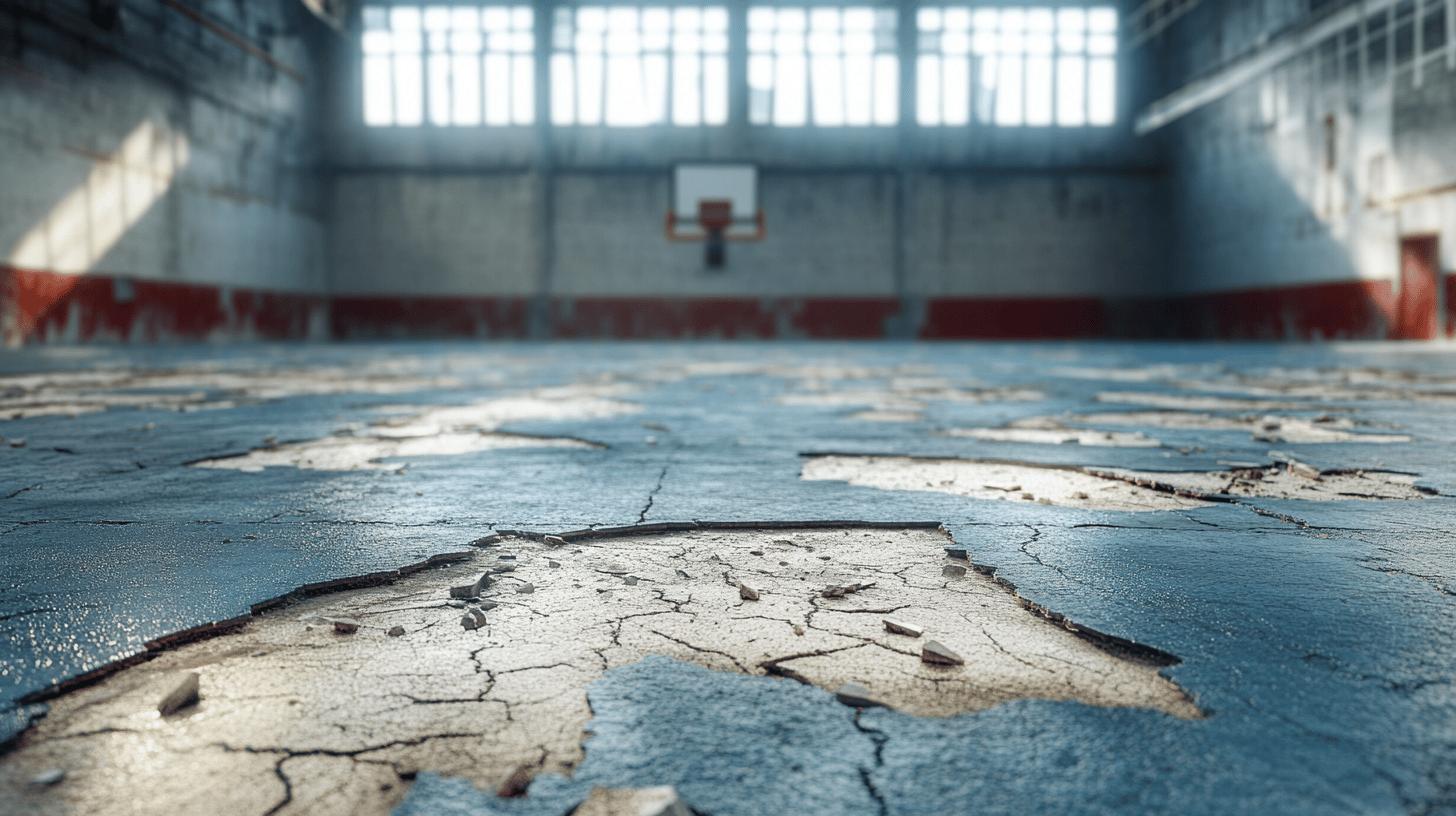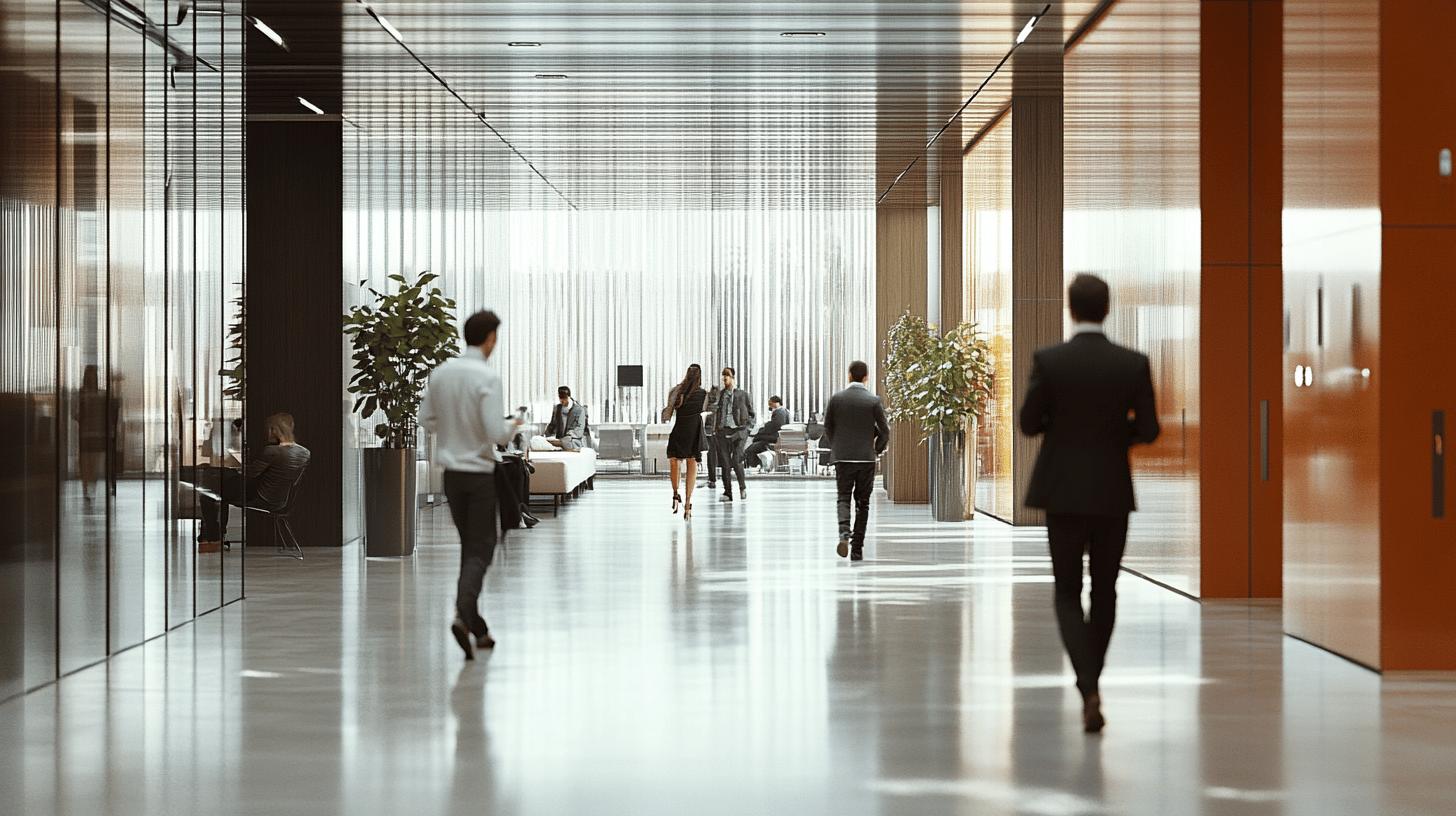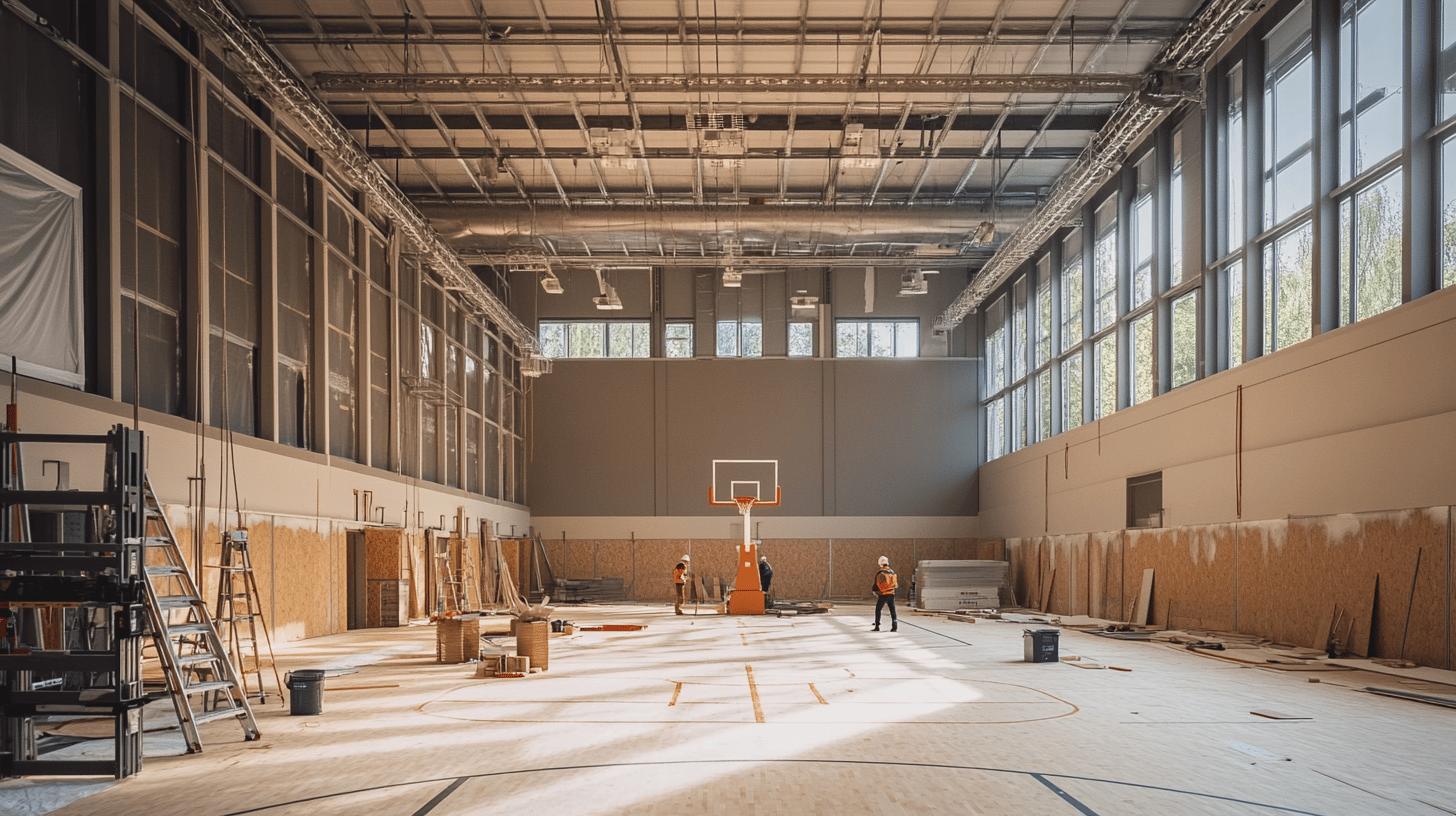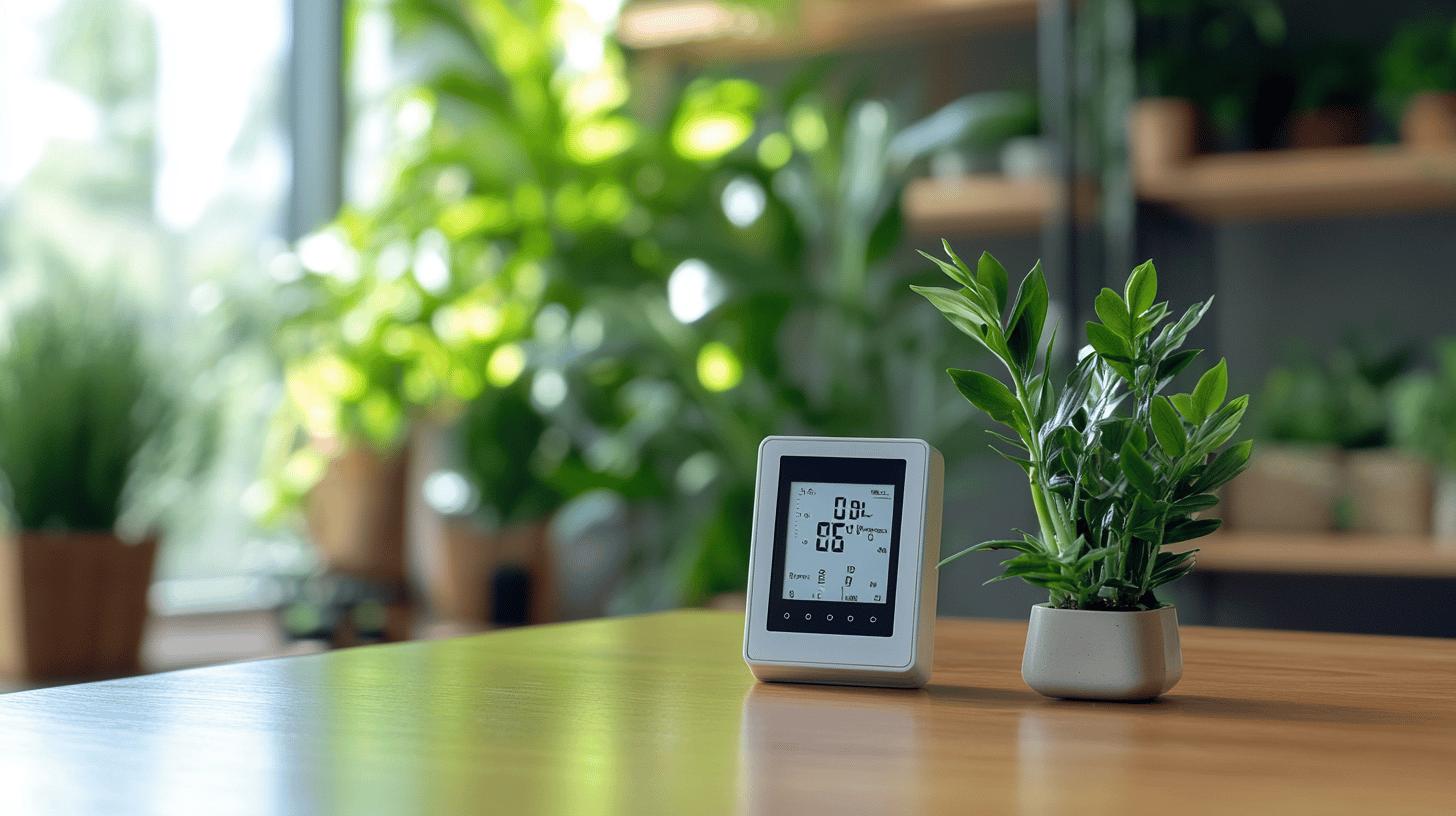Are neglected floors silently draining your budget? The hidden costs of poorly maintained sports flooring are more substantial than you might realise. Facility managers often overlook the financial implications of neglect, focusing solely on immediate savings, without considering the long-term expenses incurred by frequent repairs. This blog delves into the monetary strain caused by accelerated wear and tear, frequent replacements, and increased liability risks. Discover how keeping your sports flooring in top shape not only prevents unforeseen expenses but also enhances the safety, longevity, and reputation of your facility.
Understanding the Financial Implications of Poorly Maintained Sports Flooring
Neglecting sports flooring maintenance can lead to significant financial challenges for facility managers. The key cost factors associated with neglect include increased repair frequency, early replacements, and heightened liability risks. Immediate attention to these issues, often overlooked in budget planning, is essential to prevent escalating expenses.
Poor maintenance accelerates wear and tear, significantly reducing the lifespan of sports flooring. This neglect often results in frequent repair needs, adding to the cumulative cost burden. Over time, these repairs become less effective, necessitating premature replacements. Replacing flooring before its expected end of life is a substantial financial setback, impacting budget allocations for other facility improvements.
- Initial repair expenses
- Frequency of replacements
- Costs associated with accelerated wear and tear
- Long-term damage and financial impact
- Insurance premium increases due to liability issues
Addressing these financial implications is crucial for facility managers aiming to optimise budget efficiency. Proactive maintenance strategies mitigate immediate costs and extend the flooring’s lifespan, offering long-term savings. Prioritising regular inspections and repairs helps manage these hidden costs effectively, ensuring a safe and financially sound environment.
Safety Hazards and Liability Issues from Poor Flooring Maintenance
Poorly maintained sports flooring presents numerous safety hazards that can have serious consequences. Common issues include uneven surfaces, slippery conditions, and flooring damage, such as cracks or tears. These hazards not only compromise the safety of athletes but also increase the risk of accidents, leading to potential injuries and further liability concerns for facility managers.
Athlete Injury Risks
What are the typical injuries caused by poor flooring conditions?
The most common injuries include sprained ankles, knee injuries, and muscle strains, often resulting from tripping on uneven surfaces or slipping on poorly maintained floors. These injuries can significantly affect athletic performance by limiting mobility and causing discomfort. The impact of such injuries extends beyond immediate physical harm, as athletes may require extended recovery periods, potentially missing essential training or competitions.
Inadequate flooring maintenance can also lead to increased liability issues. Facility managers may face legal claims and rising insurance costs due to injuries sustained on their premises. Liability risks are heightened when accidents occur due to neglected flooring conditions.
| Safety Hazard | Potential Injury | Liability Risk |
|---|---|---|
| Uneven surfaces | Sprained ankles | Legal claims from injured athletes |
| Slippery conditions | Muscle strains | Increased insurance premiums |
| Damaged flooring | Knee injuries | Reputation damage and financial loss |
Implementing effective risk management strategies is essential for mitigating these hazards and liability issues. Regular inspections and timely repairs can prevent accidents, ensuring a safer environment for athletes. Investing in high-quality maintenance equipment and training staff to identify potential risks early also reduces liability concerns. These proactive measures safeguard athletes and protect the facility from financial and reputational damage.
The Impact of Poor Flooring on Athlete Performance and Facility Reputation

Poorly maintained sports flooring directly impacts athlete performance. Uneven surfaces and damaged areas can lead to reduced traction, affecting speed and agility, vital for optimal athletic performance. Due to the unstable footing provided by substandard flooring, athletes may experience increased fatigue and an elevated risk of injuries such as sprains and strains. This not only hampers their ability to perform at peak levels but also heightens the chance of long-term injuries, requiring extended recovery periods and potentially affecting their career progression.
Poorly maintained sports flooring similarly affects the facility’s reputation and brand image. When athletes encounter suboptimal conditions, dissatisfaction can quickly lead to negative reviews and word-of-mouth critiques, damaging the facility’s reputation. As word spreads, potential clients or event organisers may choose to avoid the venue, leading to decreased facility usage and a loss of revenue. This ripple effect can further result in losing sporting events, which are often crucial for the facility’s financial viability and community standing.
- Reduced athlete satisfaction
- Negative reviews from users
- Decreased facility usage
- Loss of potential clients or events
Extending the Lifespan of Sports Flooring Through Regular Maintenance
Regular maintenance is crucial in extending the lifespan of sports flooring and ensuring its optimal performance. What are the benefits of regular maintenance? It enhances the durability and functionality of the flooring, reducing the risk of injuries and maintaining the facility’s aesthetic appeal. This benefits athletes by providing a safer and more reliable surface and results in significant cost savings by avoiding premature replacements and frequent repairs.
Maintenance Best Practices
Effective sports flooring maintenance involves a combination of routine procedures and scheduled interventions. Essential steps include regular cleaning and inspections to identify potential issues before they escalate into costly repairs.
- Regular cleaning and mopping
- Scheduled inspections and repairs
- Use of protective mats in high-traffic areas
- Prompt addressing of any visible damage
- Investing in quality maintenance equipment
- Engaging professional services for deep cleaning
Regular maintenance offers substantial long-term cost savings. By investing in systematic upkeep, facilities can avoid the high expenses associated with flooring replacements and extensive repairs. Regular maintenance not only prolongs the flooring’s lifespan but also enhances athlete performance by providing a consistent and safe playing surface. In the long run, an effective maintenance strategy supports a facility’s financial health and reputation, ensuring it remains a preferred choice for sports events and activities.
Expert Insights: Case Studies on Maintenance Success
Real-world examples of sports flooring maintenance success illuminate how strategic upkeep can significantly enhance performance and reduce injury rates. Case studies serve as valuable resources for facility managers and decision-makers, highlighting maintenance best practices that lead to improved athletic conditions. By examining these successful examples, managers can better understand the importance of regular inspections and the selection of skilled flooring contractors to achieve optimal results.
Case Study 1: Enhancing Performance Through Regular Upkeep
Management implemented a comprehensive maintenance schedule in a mid-sized sports facility to ensure optimal flooring performance. What was their approach? They conducted bi-weekly inspections and performed routine cleaning and minor repairs. This systematic upkeep preserved the flooring’s integrity and provided athletes with a consistently safe and reliable surface. As a result, the facility reported a noticeable improvement in athlete performance, with increased satisfaction and fewer complaints about flooding issues.
Case Study 2: Reducing Injuries with Proactive Maintenance
Another facility prioritised proactive maintenance strategies to minimise user injuries. What methods were implemented? The management team engaged professional flooring contractors to conduct quarterly deep cleans and address any emerging issues promptly. The facility significantly reduced injury incidents by investing in quality maintenance equipment and training staff to identify potential hazards early. The outcome was a safer environment for athletes and reduced liability concerns and insurance costs.
Incorporating expert insights and case study findings into maintenance planning can significantly influence a facility’s success. Facility managers who prioritise regular inspections and adopt proven maintenance strategies can ensure their sports flooring remains in top condition, bolstering athlete performance and safeguarding the facility’s reputation.
Final Words
The financial implications of poorly maintained sports flooring extend beyond initial repair costs. Frequent replacements and increased liability affect long-term expenses. Safety hazards and athlete injuries further elevate liability risks, impacting insurance premiums. Moreover, neglected maintenance affects athlete performance and damages the facility’s reputation, deterring potential clients.
Implementing regular maintenance practices is crucial, enhancing both the flooring’s lifespan and athletic performance. Case studies have shown positive outcomes with strategic upkeep, illustrating the substantial benefits of expert insights and proactive management. Addressing these hidden costs ensures a superior sports experience and sustained facility success.
FAQ
How do you maintain sports flooring?
Regular maintenance involves consistent cleaning, scheduled inspections, and prompt damage repairs. To ensure longevity and performance, implement protective measures in high-traffic areas and periodically engage professional services for deep cleaning.
What is the cost of PVC sports flooring?
The cost of PVC sports flooring varies based on quality and installation specifics. On average, it ranges from £20 to £80 per square metre. Including professional installation will likely increase the overall expense.
How long do gym floors last?
Gym floors typically last between 10 to 15 years. Regular maintenance, including cleaning and repairs, can extend their lifespan. Neglect can lead to premature wear and an increased need for replacement.


